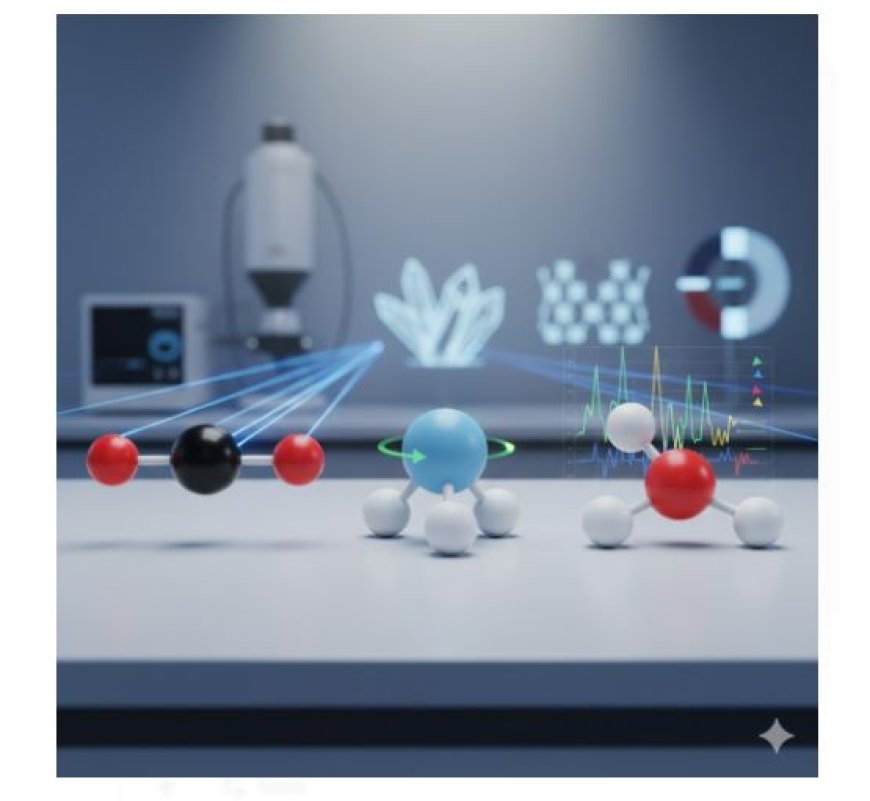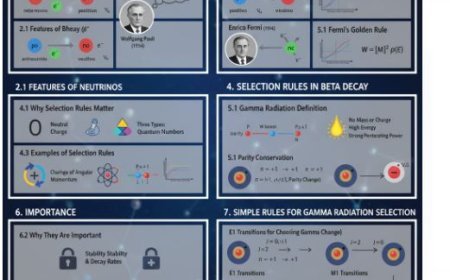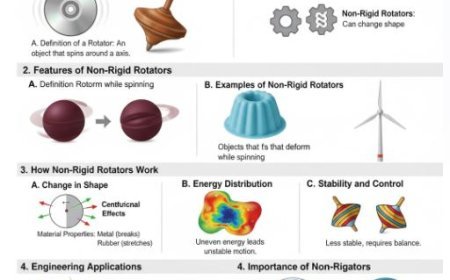LINEAR, SYMMETRIC TOP, AND ASYMMETRIC TOP MOLECULES
Explore how molecules adopt linear, symmetric-top, and asymmetric-top shapes, each with unique rotational behavior and spectra; advanced techniques like IR, microwave spectroscopy, X-ray crystallography, NMR, and mass spectrometry reveal their structure, dynamics, and chemical properties.

Exploring Molecular Shapes: Linear, Symmetric Top, and Asymmetric Top Molecules
Molecules come in a variety of shapes and sizes in the fascinating fields of chemistry and physics. Scientists can learn more about the properties and behavior of substances by understanding these molecular structures.
1. Types of Molecular Shapes
1.1 Linear Molecules
- Definition: Linear molecules have atoms arranged in a straight line. They can be visualized as a chain with two ends.
- Example: Carbon dioxide (CO₂), where a carbon atom is centrally positioned with two oxygen atoms at either end.
- Properties: The linear structure influences properties like reactivity and light interaction.
1.2 Symmetric Top Molecules
- Definition: Symmetric top molecules have a symmetrical shape, meaning they appear the same from different perspectives. These molecules have two equal moments of inertia and can rotate around specific axes.
- Example: Ammonia (NH₃), which has a pyramidal shape but is classified as a symmetric top due to its rotational symmetry.
- Rotational Spectra: These molecules exhibit unique rotational spectra as they rotate around two equivalent axes, leading to distinct energy levels and spectral patterns.
1.3 Asymmetric Top Molecules
- Definition: Asymmetric top molecules lack symmetry planes. They possess three different moments of inertia, leading to complex rotational motion.
- Example: Water (H₂O), which has a bent molecular shape, causing it to rotate differently in various axes.
- Rotational Spectra: These molecules display complex spectra due to a wider range of energy levels and rotational transitions.
2. Experimental Techniques in Physics
Scientists use various experimental techniques to study molecular structures, behaviors, and energy levels. These techniques help in determining molecular interactions, properties, and spectral characteristics.
2.1 Spectroscopy
Spectroscopy helps scientists analyze how molecules interact with light. Molecules absorb or emit light at specific wavelengths, revealing structural and energetic properties.
Types of Spectroscopy
- Infrared (IR) Spectroscopy: Used to identify functional groups in molecules by analyzing how they absorb infrared light.
- Microwave Spectroscopy: Useful for studying rotational transitions, especially in linear and symmetric top molecules.
2.2 X-ray Crystallography
- Definition: A powerful technique that determines the three-dimensional arrangement of atoms in a crystal.
- Method: X-rays are directed at a crystal, and the scattered rays form a diffraction pattern, which reveals atomic positions.
- Importance: Essential for studying complex molecular structures, including symmetric and asymmetric top molecules.
2.3 Nuclear Magnetic Resonance (NMR) Spectroscopy
- Definition: Uses the magnetic properties of atomic nuclei to analyze molecular structure and motion.
- Method: A sample is placed in a magnetic field, and radio waves are applied to observe molecular behavior.
- Applications: Especially useful in studying large biological molecules and their spatial arrangement.
2.4 Mass Spectrometry
- Definition: Determines the mass and composition of molecules.
- Method: Measures molecular weights and provides insights into atomic arrangement.
- Applications: Used to analyze molecular fragments, helping in the study of both symmetric and asymmetric top molecules.
IMAGE SOURCE (THUMBNAIL)
What's Your Reaction?



































